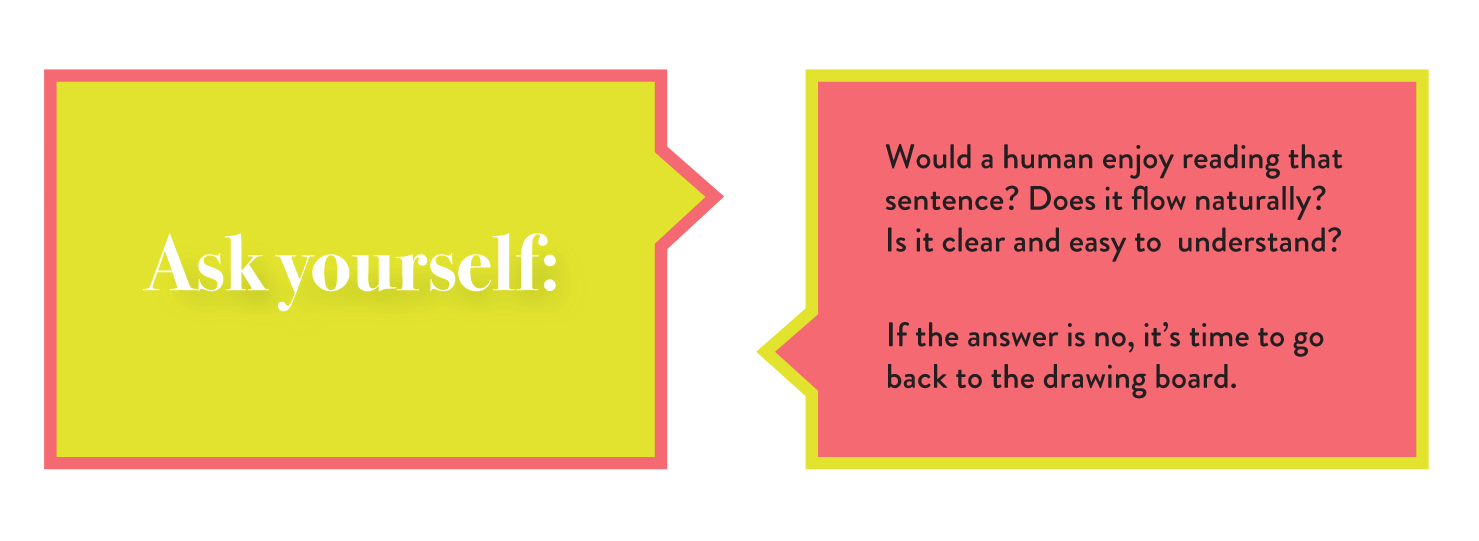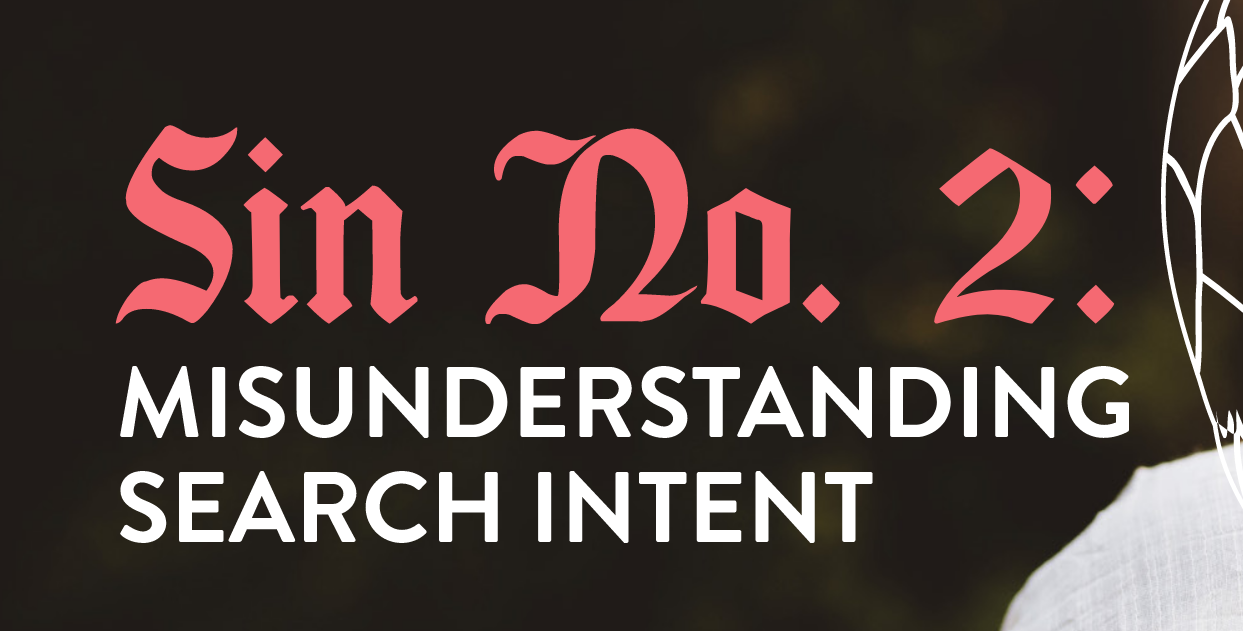 SEO is an experimental field.
SEO is an experimental field.
When your website is at the mercy of an elusive algorithm, it opens up the playing field to innovate and push the boundaries on traditional tactics and “best practices.”
However, throughout shifting trends and algorithm updates, there’s one thing that still holds true: what’s good for the searcher is good for SEO.
Yet, in the relentless pursuit for more traffic, many digital marketers continue to forget this — effectively hindering their SEO efforts by making the same mistakes over and over again.
So instead of writing another article about what you should do to have a search-friendly website, I feel that it’s more valuable to share what you shouldn’t do.
The truth is that you can innovate as much as you want, but, if you make one (or multiple) of these common mistakes, it’s not going to make much of a difference.
Without further ado, here are the seven deadly sins of SEO.
Recognize them, and avoid them at all costs!
Backlinks are essential to SEO. The more quality links you have, the more credible and authoritative your site is in the eyes of a search engine.
However, building backlinks is notoriously difficult.
Over the years, marketers have had to get creative with their tactics. This has also led some people to seek out ethically questionable practices to get more links, primarily by paying for them.
Buying backlinks falls under the category of black hat SEO.
For those unfamiliar, these are bad SEO tactics that violate search engine guidelines in an attempt to manipulate the system.
Basically, it’s considered cheating, and your website can get penalized for it. Search engines have no problem taking action against your website if it violates their rules. If you’re going to play the traffic game, you have to play it fair.
Aside from being pretty unethical, paying for backlinks is also a generally ineffective tactic. This is because many of the links available for purchase come from spammy, irrelevant websites.
One of the first things you learn in SEO is that not all backlinks are equal in value. Search engines place significantly more weight on links that come from credible websites.
Ten high quality links is much better than 100 shady links.
Spam links can happen organically, too. Sometimes these low-quality websites will link to you on their own, so it’s important to mine through your backlink profile periodically and do a clean sweep of the spam.
So while it may feel tempting to go after spammy links for a quick “boost,” it’s not worth the consequences. Instead, focus your efforts on organically sourcing links by creating high-quality content that will make other websites want to link to you.
Search intent is the purpose or end goal behind a user’s search query.
The reason search intent is tricky is because the way you understand a term can be entirely different from the way it’s interpreted by a search engine.
This is best illustrated with an example:
Let’s say you’re writing an article on content management systems and want to target the high volume keyword “CMS.” This makes sense because CMS is a common abbreviation for “content management system.”
However, when you run “CMS” through search, you notice that all of the organic results have to do with an entirely unrelated topic: the Centers for Medicare & Medicaid Services, a government agency.
*facepalm*
It’s time to readjust the keyword targeting of your article.
If you write the entire piece around “CMS,” it will likely never rank. This is because you’re talking about a type of software, but the search intent for that keyword is related to a federal agency.
The easiest way to avoid a search intent mishap is to always do your due diligence during the keyword research process. As you can see from the example, it’s as simple as running a quick search for the target keyword and reviewing the results.
This shows you how the search engine is interpreting the search query based on the content recommendations it provides.
Having a website with poor UX is a one-way ticket to diminishing search rankings. Yet, for many marketers, user experience still takes a backseat to content creation.
You’ll notice a recurring theme throughout this article: what’s good for the user is good for SEO.
At some point, all of us have encountered a website that’s slow, glitchy, and filled with pop-ups. When I land on a site like this, my immediate first instinct is to exit. I feel confident that many others would agree.
What’s the point of creating world-class content if your audience is unable to or doesn’t know how to navigate it?
Plus, solving a UX problem often requires additional help from a web designer or software developer. It’s not always an easy fix, but it’s a critically important one.
Search engines are designed to deliver the most user-friendly results on the web. So no matter how good your content is, it won’t matter if your website makes it impossible to enjoy it.
For this reason, having a website that’s functional, accessible, and easy to navigate should be at the top of your to-do list.
Believe it or not, there is such a thing as optimizing too much.
In SEO, we like to call it keyword stuffing. This is the process of overusing keywords on a web page in an attempt to achieve improved organic rankings. You’re placing keywords in the meta data, body text, or link anchor text of a page in a way that’s clearly forced or unnatural.
Here’s an example:
“Company X is your one-stop-shop for all things social media marketing. Our social media marketing software is a world-class solution used by social media marketing professionals across the globe. Come here for all of your social media marketing needs.”
Not all keyword stuffing is going to be this obvious, but you get the idea.
In the early days of the internet, you could load a web page with keywords as a way to “game the system” and boost rankings. But as time went on and search engines became more sophisticated, the practice quickly became obsolete. Now, keyword stuffing is associated with black hat SEO and can get your website penalized or even permanently deindexed.
It’s worth noting that keyword stuffing can sometimes be unintentional. To avoid it, take the extra time to identify multiple keyword variants during your content planning and research process. Brainstorm different ways of saying the same thing — synonyms are your best friend.
When in doubt, remember that you’re creating content for humans. Not bots or search engine crawlers.

At a high level, the goal of search engine optimization is to drive organic traffic. But that doesn’t necessarily mean traffic should be the sole metric you use to monitor SEO performance.
By itself, traffic is nothing more than a vanity metric.
If you have one million monthly web visitors but none of those people converted into leads or customers, then it doesn’t really matter, does it?
You have to look at traffic alongside other key metrics such as bounce rate, click-through rate, and conversions. Only then will you start to see the full picture of what’s actually happening on your website.
It’s also important to know that the data won’t always be black and white. Some of your best converting pages can be some of the lowest trafficked. That doesn’t mean they’re any less valuable.
Don’t become fixated on organic traffic alone. Although it is a strong indicator that your SEO efforts are making an impact, it’s just one part of a much bigger story.
It’s time consuming to ideate and create great content; it just is. As a result, many marketers fall into the trap of creating lackluster pieces just for the purpose of ranking.
The more content you create, the more chances you have at ranking organically for new keywords. However, you should never compromise quality for quantity.
Adding to the mess of mediocre content won’t do you any favors in the long run. If you’re rushing through your editorial calendar just to get things published, it’s likely that your pieces aren’t worth your time and money.
Content without research, data, uniqueness, and somewhat of an entertainment level, rarely attract backlinks on their own and will be less appealing for other quality sites to want to link back to.
Additionally, you risk losing readership. Your content should be for your audience, first and foremost. If all you’re doing is writing mindless 700-word articles for the sole purpose of ranking, how does that empower your brand, help your sales team, or encourage your audience to want to work with you?
It’s more labor intensive, but taking the time to commit to creating good content is one of the best things you can do for SEO.
Step into your audience’s shoes and what they value when you’re ideating topics. Conduct research on how they like to consume content. Video or article? Podcast or live show?

Assess the SERP to see what’s currently ranking and find gaps that those pieces are missing and make sure your pieces are more robust, data-driven, and easier to digest.
Creating SEO-driven content isn’t an excuse to skip out on quality or creativity. In fact, these pieces should be non-negotiables if you want to outrank competitors and build your brand.
The copy on your website plays a big role in the way web visitors perceive and understand your business. It also has a major effect on your SEO.
Thorough and strategic copywriting married with extensive audience research is critical to advance search marketing overall.
By now, most marketers know that you have to perform keyword research before you can start writing content. However, many fail to understand just how granular you have to get with your research if you want to see real SEO results.
Take the time to dive deep into your target customer persona(s). Gain a micro-level understanding of what they care about and what problems they’re trying to solve. Run in-depth keyword analyses to understand what terms they use to search. Assess the language your competitors are using.
Then, take those findings and weave them into your website copy.
Remember that traffic without conversions is just a number. Powerful copywriting is the secret sauce that draws users in, captures their intent, speaks to their pain points, and then convinces them to take action.
Not every marketer is an expert copywriter. But by doing the research to deeply understand your audience and their online behavior, every marketer can get better at writing copy that fuels organic traffic and conversions and makes their visitors have a more seamless experience.

It’s unlikely that you can attribute successful SEO to one single tactic, but you can tank your rankings by committing these deadly search sins.
Keep in mind how critical it is to keep the user at the center of your search efforts. In an industry that’s constantly evolving, that’s the one thing that’s withstood the test of time.










